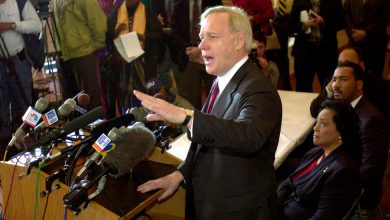Is America on the Mend?

Almost four years have passed since Covid-19 struck. In America, the pandemic killed well over a million people and left millions more with lingering health problems. Much of normal life came to a halt, partly because of official lockdowns but largely because fear of infection kept people home.
The big question in the years that followed was whether America would ever fully recover from that shock. In 2023 we got the answer: yes. Our economy and society have, in fact, healed remarkably well. The big remaining question is when, if ever, the public will be ready to accept the good news.
In the short run, of course, the pandemic had severe economic and social effects, in many ways wider and deeper than almost anyone expected. Employment fell by 25 million in a matter of weeks. Huge government aid limited families’ financial hardship, but maintaining Americans’ purchasing power in the face of a disrupted economy meant that demand often exceeded supply, and the result was overstretched supply chains and a burst of inflation.
At the same time, the pandemic reduced social interactions and left many people feeling isolated. The psychological toll is hard to measure, but the weakening of social ties contributed to a range of negative trends, including a surge in violent crime.
It was easy to imagine that the pandemic experience would leave long-term scars — that long Covid and early retirements would leave us with a permanently reduced labor force, that getting inflation down would require years of high unemployment, that the crime surge heralded a sustained breakdown in public order.
But none of that happened.
You may have heard about the good economic news. Labor force participation — the share of adults in today’s work force — is actually slightly higher than the Congressional Budget Office predicted before the pandemic. Measures of underlying inflation have fallen more or less back to the Federal Reserve’s 2 percent target even though unemployment is near a 50-year low. Adjusted for inflation, most workers’ wages have gone up.
For some reason I’ve heard less about the crime news, but it’s also remarkably good. F.B.I. data shows that violent crime has subsided: It’s already back to 2019 levels and appears to be falling further. Homicides probably aren’t quite back to 2019 levels, but they’re plummeting.
None of this undoes the Covid death toll or the serious learning loss suffered by millions of students. But overall both our economy and our society are in far better shape at this point than most people would have predicted in the early days of the pandemic — or than most Americans are willing to admit.
For if America’s resilience in the face of the pandemic shock has been remarkable, so has the pessimism of the public.
By now, anyone who writes about the economic situation has become accustomed to mail and social media posts (which often begin, “You moron”) insisting that the official statistics on low unemployment and inflation are misleading if not outright lies. No, the Consumer Price Index doesn’t ignore food and energy, although some analytical measures do; no, grocery prices aren’t still soaring.
Rather than get into more arguments with people desperate to find some justification for negative economic sentiment, I find it most useful to point out that whatever American consumers say about the state of the economy, they are spending as if their finances are in pretty good shape. Most recently, holiday sales appear to have been quite good.
What about crime? This is an area in which public perceptions have long been notoriously at odds with reality, with people telling pollsters that crime is rising even when it’s falling rapidly. Right now, according to Gallup, 63 percent of Americans say that crime is an “extremely” or a “very” serious problem for the United States — but only 17 percent say it’s that severe a problem where they live.
And Americans aren’t acting as if they’re terrified about crime. As I’ve written before, major downtowns have seen weekend foot traffic — roughly speaking, the number of people visiting the city for fun rather than work — recover to prepandemic levels, which isn’t what you’d expect if Americans were fleeing violent urban hellscapes.
So whatever Americans may say to pollsters, they’re behaving as if they live in a prosperous, fairly safe (by historical standards) country — the country portrayed by official statistics, although not by opinion polls. (Disclaimer: Yes, we have vast inequality and social injustice. But this is no more true now than it was in earlier years, when Americans were far more optimistic.)
The big question, of course, is whether grim narratives will prevail over relatively sunny reality in the 2024 election. There are hints in survey data that the good economic news is starting to break through, but I don’t know of any comparable hints on crime.
In any case, what you need to know is that America responded remarkably well to the economic and social challenges of a deadly pandemic. By most measures, we’re a nation on the mend. Let’s hope we don’t lose our democracy before people realize that.
The Times is committed to publishing a diversity of letters to the editor. We’d like to hear what you think about this or any of our articles. Here are some tips. And here’s our email: [email protected].
Follow the New York Times Opinion section on Facebook, Instagram, TikTok, X and Threads.




